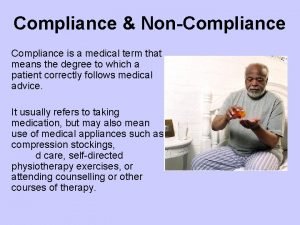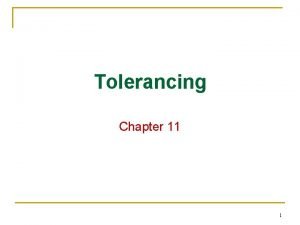Risk Tolerance Factor 6 Cost of NonCompliance Risk

- Slides: 1

Risk Tolerance Factor # 6 Cost of Non-Compliance Risk tolerance can be reduced when the cost of non-compliance to a standard is increased. The reverse is also a factor. . . if the cost of compliance is high ($$ or effort) more risk will be accepted. Increase the cost of non-compliance on critical tasks: - Be selective and only apply this where the standard can always be applied. Decrease the cost of compliance by: - Removing barriers (cost or effort) that prevent conformance to standard Increase the reward for compliance - Incentives can be used as a positive motivator for compliance. Exercise and Discussion Are there standards we have in our work group where the risk of injury warrants a high cost (penalty) for non-compliance? _________________________________________________________________________ Are there standards in our work group that are difficult to conform to? _________________________________________________________________________ What are the barriers (costs, effort, ) that make conformance difficult ? _________________________________________________________________________ Identify a specific action that you will take to remove a barrier that has made compliance to a standard difficult. _________________________________________________________________________ Is there a specific example from your work place (or off the job) where an increased cost of noncompliance has been effective in reducing the acceptance of risk? _________________________________________________________________________ Are there other costs to you personal for non-compliance? _____________________________________ D. J. Fennell, Imperial Oil Resources

